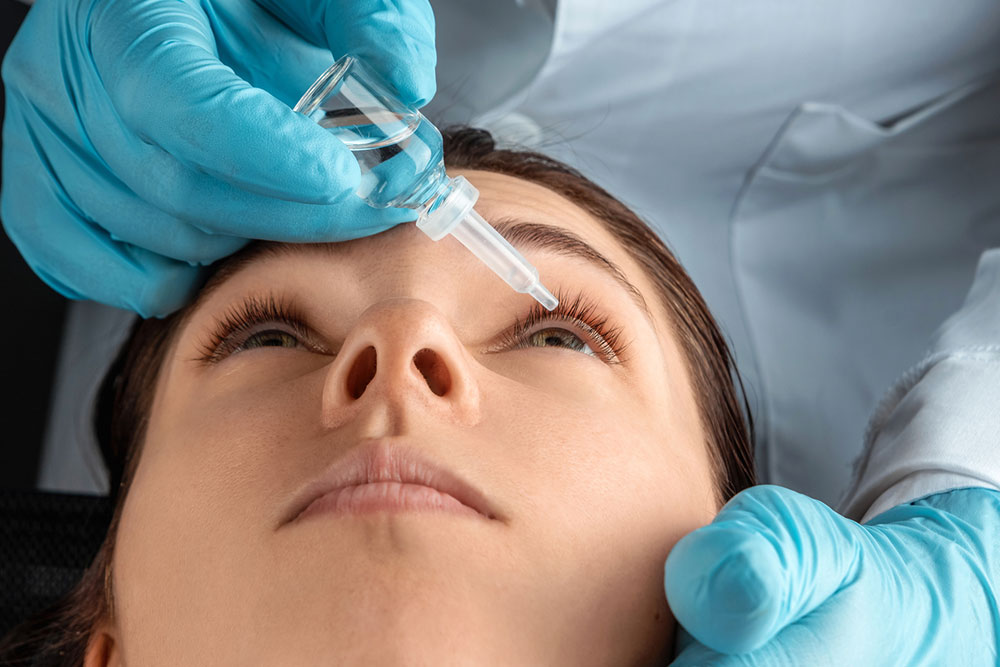7 Essential Tips to Maintain Eye Health

Maintaining eye health is crucial for ensuring healthy vision throughout life. However, individuals often fail to notice how their lifestyle and several environmental factors negatively affect their eye health. Whether it is long exposure to harsh sunlight or hours spent in front of the screen, everything affects the eyes. So, prioritizing eyes and taking proper care of them becomes important. Here are a few simple ways to maintain eye health to ensure healthy vision.
1. Following the 20-20-20 rule
Facing the screen constantly for a long time can lead to the drying of the eyes and put a strain on them. Dry eyes further cause irritation and itchiness, leading to discomfort and disruptions throughout the day. So, whether facing their phone screen or working in front of their laptop, it is important to take breaks in between by following the 20-20-20 rule. The rule suggests that after every 20 minutes of facing the screen, one must take a break for 20 seconds, look away, and focus on something at least 20 feet away. It is a simple but effective way to reduce eye strain and maintain visual comfort.
2. Wearing sunglasses
Sunglasses might be a fashion accessory, but they are not just that. Sunglasses are essential to protect the eyes from the harmful effects of the sun’s ultraviolet (UV) rays. Prolonged exposure to harsh sunlight and UV rays can increase the chances of developing eye conditions such as cataracts. Hence, it is important to wear UV-blocking sunglasses when stepping out in the sun. One can also purchase sunglasses with polarized lenses to reduce glare. Alternatively, one can also purchase UV-blocking contact lenses for this purpose. These are especially good for those who require vision correction.
3. Ensuring disinfection before putting on contact lenses
Whether one is wearing prescription contact lenses or cosmetic-colored lenses, ensuring proper disinfection is extremely important. One must properly wash their hands before wearing eye lenses to prevent infections. They must also disinfect their lenses as their eye care professional recommends to prevent eye infections and discomfort. To disinfect their lenses, one must follow the instructions on the contact lens solution carefully.
4. Going for regular eye checkups
Regular eye exams are crucial for maintaining good eye health. They allow ophthalmologists to detect and diagnose eye conditions and vision problems early, even before one has begun noticing the symptoms themselves. Early detection of eye conditions ensures more effective treatment and prevention of vision loss. Moreover, it is recommended that individuals have a comprehensive eye exam more frequently if they have a pre-existing eye condition or a family history of eye diseases.
5. Eating healthy meals
Consuming well-balanced meals filled with essential nutrients plays a significant role in overall health, including eye health. Nutrients like antioxidants and vitamins (especially A and C) and minerals like lutein and zeaxanthin are crucial for maintaining good vision and reducing the risk of eye diseases. Some common foods that especially help in maintaining healthy eyes include leafy greens, carrots, fatty fish, nuts, and citrus fruits. Incorporating these foods into the meals can do wonders for the eyes and vision.
6. Staying hydrated
Adequate hydration is essential, even for the eyes. Proper hydration helps prevent dry eyes, a condition where the eyes cannot produce enough tears or poor-quality tears. As mentioned above, dry eyes can lead to a lot of irritation and itchiness, leading to further discomfort and blurred vision. Staying well-hydrated can alleviate these symptoms.
7. Forgetting to wear prescription glasses or lenses
If one has been prescribed to wear glasses or lenses for vision correction by an eye care professional, they must not neglect it. Not wearing the correct prescription glasses or eye lenses can negatively affect the eyes’ health and overall well-being. It can lead to increased strain on the eyes, unclear vision, and headaches. It can make everyday tasks, like reading or driving, difficult and potentially dangerous if not corrected. If one does not feel comfortable with the glasses or lenses prescribed, they must consult an eye care professional. They can also consult an ophthalmologist to inquire about the option of corrective surgery.
Incorporating these simple practices into daily life can go a long way toward safeguarding one’s eye health.






